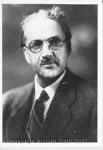Albert Henry Krehbiel
Albert Henry Krehbiel
Place: Denmark
Born: 1873
Death: 1945
Biography:
Albert Henry Krehbiel as well as the coveted Prix de Rome. In 1905, he received the esteemed honor of having two of his neoclassical works selected by jury for the annual exhibition organized by the Société des Artistes Français in Paris (also known as the Paris Salon).
Returning to the United States, Krehbiel was commissioned to design and paint the mural for the wall of the Chicago Juvenile Court in 1906. In 1907, he was unanimously awarded the commission in a national competition to design and paint the eleven wall and two ceiling murals for the Supreme and Appellate Court Rooms of the Illinois Supreme Court Building in Springfield, the state's capital. Begun in 1907, the final Supreme Court Building mural was completed and installed in 1911. Mr. W. Carby Zimmerman, architect of the building, considered the work done by Krehbiel to be "an example of the best mural painting ever executed in the West."
In 1918 and 1919, Krehbiel spent his summers at art colonies in Santa Monica, California, and in Santa Fe, New Mexico. From 1920 through 1923, he spent summers exclusively in Santa Fe as an exhibiting member of the Santa Fe Art Colony. In the summers of 1922 and 1923, Krehbiel was invited by the Museum of New Mexico in Santa Fe to participate in its Visiting Artists Program and was given a studio in the prestigious Palace of the Governors next to his contemporary, Ashcan realist Robert Henri.
Krehbiel had associations and exhibitions with the other artists of the Santa Fe Art Colony—and the Taos Society of Artists—such as George Bellows and Gustave Baumann (exhibition in McPherson, Kansas, 1918), and Bror Julius Olsson Nordfeldt, Marsden Hartley, and Sheldon Parsons (exhibition in El Paso, Texas, 1920). Other notable artists that Krehbiel exhibited with during this period include William Victor Higgins, Ernest L. Blumenschein, John French Sloan, Raymond Jonson, and Stuart Davis.
Krehbiel was a member of the faculty at the Art Institute of Chicago for 39 years and at the Armour Institute of Technology (later Illinois Institute of Technology after merging with the Lewis Institute) for 32 years. In 1926, he helped pioneer the Chicago Art Institute Summer School of Painting (later named Ox-Bow) in Saugatuck, Michigan, where he spent most of his remaining summers teaching and painting. In 1934, Krehbiel opened his own summer school of art in Saugatuck called the AK Studio When able to break away from his students, he would capture the surrounding rolling hills and the Kalamazoo River in oil, watercolor, and pastel. He would often visit Saugatuck in winters to portray the area in its vast and billowing cover of snow.
During the years of 1912 through about 1930, Krehbiel was known to leave his Park Ridge, Illinois, home on a freezing cold morning and not return until the end of the day with two or three freshly painted canvases of the surrounding landscape. He also composed many watercolors and countless pastels of the area, often capturing the local inhabitants in the warmer months working in the fields or taking a moment to enjoy the lush forest landscape populated with brooks and streams. Occasionally, Krehbiel would visit the northern Illinois town of Galena on weekends and holidays to paint large canvases of the tree-covered hills with their scattering of homes and barns.
When teaching at the Art Institute of Chicago and residing (at the Cliff Dwellers Club) in downtown Chicago, Krehbiel turned to recreating the urban landscapes, most of them within walking distance to his classrooms. These familiar scenes were painted between classes from the banks of the Chicago River. Most were painted during rush hour when automobiles and pedestrians populated the bridges and streets. He painted the Michigan Avenue Bridge and the Chicago River numerous times, each from a different perspective. Most of the images of the bridge were executed in 1920, the year of its grand opening, with the bridge towers draped in banners of red, white, and blue ribbons.
More...
Wikipedia link: Click Here














